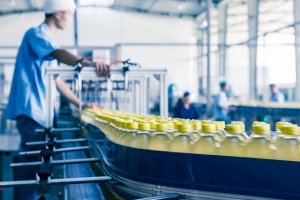
Pigments and dyes are two colorants that are being widely used in several commercial and industrial applications. Though fundamentally they come from the same building block, dyes and pigments differ from one another in one major aspect and that is dyes are soluble in the medium in which they are mixed while pigments are non-soluble.
Dyes are generally water-dispersible or water-soluble compounds which get absorbed into the substrate. The molecules of the dye are chemically bonded to the substrate surface and become one with the material on which it is used. Pigments, on the other hand form no association with the substrate. Being insoluble, pigments require a binder to enable them to adhere to the surface of the substrate. Dyes and pigments have wound their way into a number of industries such as plastics, paints, leather, cosmetics, pharmaceuticals and the food and beverage industry. The pigments that are commonly used in the preparation of plastics, paints, inks etc are the Phthalocyanine pigments. As for the cosmetics, drugs and food industry, the dyes used here are carefully controlled items, strictly regulated by the government authorities. Regulations state the types and amounts of food color that are approved and also the conditions, which enable them to be safely used.
The synthetic water-soluble dyes that are allowed to be used in the food and beverage industry come in several forms like the granular, powder, plating grade and the sphero clean form. They are used to prepare the primary food colors as well as the blended food colors. Blended colors are prepared using a combination of two or more primary food-coloring agents which are water-soluble in nature. Blended colors offer more shade varieties and are widely used in several commercial applications such as the dairy industry and dairy products, processed foods, bakery items and many more. Sometimes, herbal extracts are also used in varying formulations as natural dyes in the food industry. In addition to the above-mentioned items, in some cases, lake pigments need to be used as color additives in the food and beverage industry. This happens in the following cases:
- Icing and coating applications where color bleeding is just not allowable
- In baked recipes where there are again chances of color running
The lake pigments are commonly used in the pre-dispersed liquid form or the powder form. Lake pigments are dispersed in several liquids such asglycerin, oil, water and others depending upon the user’s need.
Another food colorant that is most widely used and highly popular is the caramel color range. This color range that varies from darkest brown to reddish brown to light yellow finds its way into every segment of the food industry. Some of the applications where this food colorant is used are baked food items, sauces and seasonings, vinegars, soups, candies and many others. Easy to handle, long-lasting and cost-effective are some of the attributes of this food colorant that has made it more popular as compared to the synthetic/natural colors in the food and beverage industry.
Whatever be the type of food color used, there is no denying the fact that it has made the world of food and beverages more colorful and delectable.